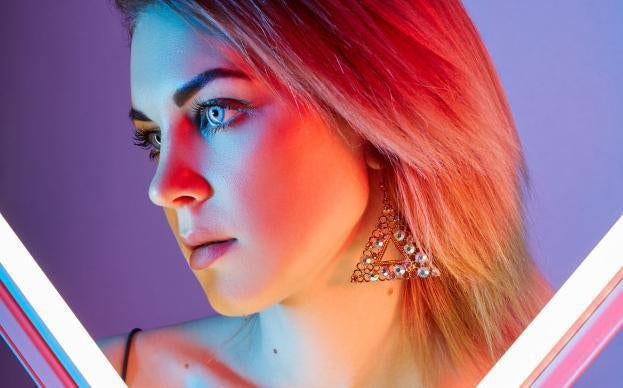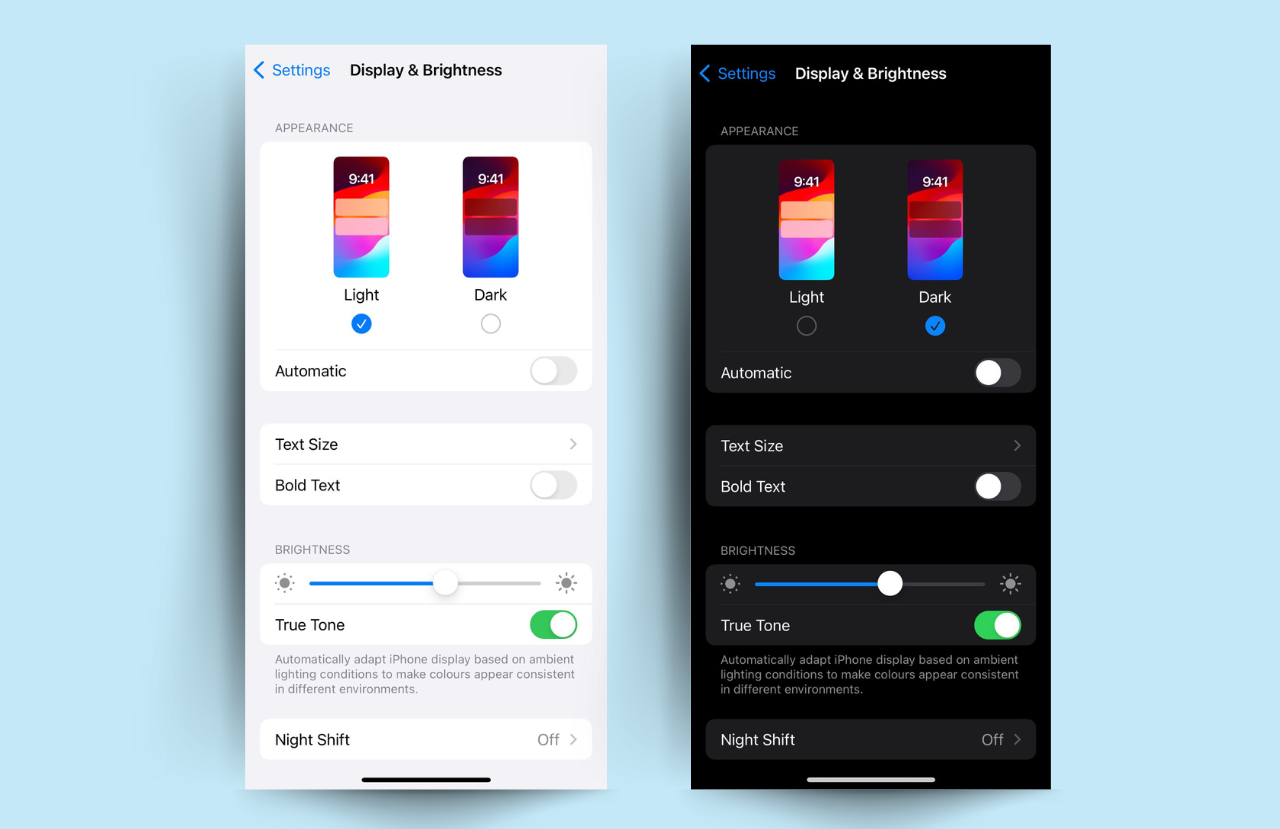Much is known about when blue and green light enters our eyes and how it can alter our circadian rhythm and impact eye health. However it’s not until more recently that research has been done on what blue and green light does to us when it is also exposed to our skin.
We have always protected our skin from ultraviolet rays (UVA and UVB) from the sun, since we know that these rays damage the skin and increase skin aging. Many experts agree however that protecting ourselves from these rays is not enough; there are also other factors that may damage our skin and harm our health such as artificial blue and green light (1).
So many of us are only concerned with just protecting our eyes from blue and green light by using blue light glasses and computer blue light glasses, but unfortunately this only mitigates part of the problem as our skin still remains completely exposed to these harmful wavelengths of light.
In this article we will explore the impacts on us when our skin is exposed to artificial blue and green light, and what we can do to mitigate its effects.
How Does Blue Light Interact with Your Skin?
The skin is made up of multiple layers - epidermis which is the most superficial, dermis where the blood vessels are, and hypodermis which is the subcutaneous cell tissue where the fat cells of the skin are. Each layer has its function, but the function of the epidermis is to serve as a protective barrier.

A study published in the acclaimed journal Nature showed that we have melanopsin receptors (the same receptors that are in our eyes) in our subcutaneous cellular tissue (the deepest layer of the skin). Blue and green light interacts with these receptors, exerting changes both in the subcutaneous tissue and in the biological clock or circadian rhythm (3), which in turn can degrade sleep quality and impact overall health status.
The Importance of Melanopsin in the Eyes and the Skin
Humans, like many animals, have the pigment melanopsin in their eyes. However more recent research has uncovered these same melanopsin receptors are also present all over our body in our skin. This pigment, as previously told, can be stimulated by receiving blue and green light on the eyes or the skin; this is why this molecule is so relevant.

When melanopsin is stimulated by blue or green light, it helps synchronize our wake-sleep rhythms or circadian rhythm. Constant exposure, not only days or weeks but for months and years, causes the “sleep hormone” melatonin to be decreased abnormally (4). To understand why we want to have high levels of melatonin please read our article “Melatonin 101 – Why This Sleep Hormone Supercharges Health And How You Can Produce More”.
The purpose of melanopsin throughout our skin is to allow our body’s sleep/wake cycle to be regulated through light. During daytime, the sun emits high levels of blue and green light, which through the interaction with melanopsin signals hormones to be released to make us feel awake, alert and motivated. Then once the sun has set, blue and green light are void from our environment and the melanopsin receptors are no longer being activated, so the production and secretion of melatonin can occur. Naturally high levels of melatonin allow us to get high quality, deep and restful sleep. Light can essentially be classified as a very powerful drug; it is the main tool that guides the brain to activate and/or deactivate many biological rhythms (5).
Changes in Circadian Rhythm through the Skin

Since the invention of the light bulb, the elegant process of our sleep/wake cycles being controlled by light (from the sun) has been completely disrupted. When the sun sets we now turn on LED lights, look at phones, work on computers, watch TV, all which are very high in blue and green light.
Prior to the light bulb we used fire and candles for light at night; these light sources were void of any blue or green light and only emitted red and orange light. Now in our modern world we continue to be exposed to extremely high levels of blue and green light all night, every night. This light is not only to our eyes, but our skin also. As mentioned earlier our skin has the same melanopsin receptors (which tell our brain when it is daytime) as our eyes.
Many people are starting to become aware of the issues of blue and green light exposure at night and are using blue light blocking glasses to block out all the harmful light entering their eyes, yet they still leave their skin completely exposed. This is really only addressing part of the issue as it’s not just the blue and green light interacting with the melanopsin receptors in our eyes, it is also interacting with the same receptors in our skin, having the same “daytime” signaling effect.
So in order to fully address the blue and green light at night issue we need to also remove the main source of this harmful light interacting with our skin, of which the biggest one to go after is the lighting in our homes. Using blue light free lighting such as our Sweet Dreams bulbs, and Twilight light bulbs help achieve this.
Direct Skin Cell Damage by Blue Light
One of the main molecules that are affected by the constant presence of blue light are called aquaporins. These are molecules that regulate the passage of water through the skin.
A study carried out in 2018 showed that blue light emitted by artificial sources such as light bulbs and electronic devices,interact with these aquaporins and subsequently decrease their numbers (2). Lower numbers of aquaporins means the passage of water through the skin is greatly affected (6).
This affectation of the passage of water makes the repair of the skin and its hydration completely compromised. Consistent and small doses of blue light that we are exposed to all day every day can generate significant damage to the hydration of the skin (6).
Exposure to blue light increases the oxidation of the tissues, which causes the skin barrier to be altered and move into a state of constant chronic inflammation. Blue light exposure on the skin alters the balance of important molecules that maintain the turgidity of the skin, such as collagen and elastin components, thus contributing to inflamed, dehydrated tissue (6, 7).
Can Blue Light Exposure Cause Weight Gain?
Blue light wavelengths are very short and powerful. This means it can penetrate the deepest layers of the skin, reaching the subcutaneous cell tissue which is where the fat or fat cells (adipocytes) are found, generating irreversible effects (3).

One of the main impacts blue light has when it penetrates the skin is that it affects the balance of fat cells, decreasing the secretion of the adipokine hormone that controls the size and balance of these cells. When the balance is lost, these cells begin to grow and produce fewer protective substances (3).
Increased adipocyte size and decreased adipokine have been directly related to insulin resistance and inflammation of the subcutaneous tissue (3). Long term insulin resistance will cause weight gain leading to even more health complications such as obesity and diabetes.
How Skin Generally Gets Affected by Blue Light?
From all the mechanisms we have seen and all the ways that blue light interacts with the skin, we can list some of the common skin issues associated with chronic overexposure to this artificial light.
- Alteration of the defense barrier and inflammation of the superficial layers of the skin
- Inflammation of subcutaneous cell tissue and increased insulin resistance
- Increased oxidation of skin cells
- Decreased skin turgor
- Accelerated skin aging
- Dehydration of the skin
- Increased expression lines
- Increased number of wrinkles with chronic exposure
By now it is very evident that blue light is not only having an effect when it enters our eyes, but also having quite detrimental effects when our skin is also being exposed to these harmful wavelengths of light. For protection from blue and green light to be complete, we need to approach protecting both the eyes and the skin. Simply wearing a quality set of blue light blocking glasses is a good start, but it’s not enough. In order to have complete protection we must look for a more complete approach.
Blue Light Free Lighting Solutions


Replacing all lighting with blue light free light bulbs throughout the home is the best way to prevent the biggest source of blue and green light at night from penetrating the skin. Using other blue blocking lighting solutions to compliment this, such as amber book lights, red night lights and red light torches, all help remove the need to use any harmful blue light rich lighting at all.
Blue light glasses will always have a place in your blue blocking toolkit. This is because there are devices we still use that will always emit blue light. When we watch TV, look at our phones, work on computer screens, and even open the fridge, we still need to protect the eyes from the blue light being emitted.
The best way to obtain a well-rounded and complete blue light protection is to complement your blue light blocking glasses with blue blocking lighting throughout the home.
Final Thoughts
It is incredible to think that something so integrated into our modern lives can be so damaging and detrimental to our health.
What once seemed like a joke thinking that taking too many selfies could have such effect on our skin and circadian health, has now been shown to be a reality, and that constant exposure to electronic devices, conventional lighting, and other light-emitting devices can be so detrimental to our health
From this article, it is clear that the use of even the best blue light glasses to protect ourselves from blue and green light is not enough. Even when we have our blue blocking glasses on, this harmful artificial light will enter via our skin and alter our entire circadian rhythm, affect our sleep quantity and quality, and all this can still happen even if we protect our eyes with blue blocking glasses.
Nobody wants to have problems with sleep or having their skin age faster than normal, but if we do not take the protection measures this will happen, and quickly. So it is time to review what we are doing wrong and change it; the main measure of treatment is always prevention and now prevention is within our reach.
Resources
- D'Orazio J, Jarrett S, Amaro-Ortiz A, Scott T. UV Radiation and the Skin. International Journal of Molecular Sciences. 2013;14(6):12222-12248.
- Avola R, Graziano A, Pannuzzo G, Cardile V. Blue Light Induces Down-Regulation of Aquaporin 1, 3, and 9 in Human Keratinocytes. Cells. 2018;7(11):197.
- Ondrusova K, Fatehi M, Barr A, Czarnecka Z, Long W, Suzuki K et al. Subcutaneous white adipocytes express a light sensitive signaling pathway mediated via a melanopsin/TRPC channel axis. Scientific Reports. 2017;7(1).
- Tosini G, Ferguson I, Tsubota K. Effects of blue light on the circadian system and eye physiology. Molecular vision. 2016;(22):61-72.
- Monica Anderson (2015-10-29). "Technology Device Ownership: 2015". Pew Research Center: Internet, Science & Tech. Retrieved 2016-10-28.
- Pittayapruek P, Meephansan J, Prapapan O, Komine M, Ohtsuki M. Role of Matrix Metalloproteinases in Photoaging and Photocarcinogenesis. International Journal of Molecular Sciences. 2016;17(6):868.
- Godley B, Shamsi F, Liang F, Jarrett S, Davies S, Boulton M. Blue Light Induces Mitochondrial DNA Damage and Free Radical Production in Epithelial Cells. Journal of Biological Chemistry. 2005;280(22):21061-21066.





